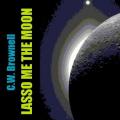When I first started writing songs, I didn’t give any thought to rhyme schemes at all. Without realizing it, I used the same two rhyme schemes over and over for five years: ABAB and AA. My writing got stale and boring, but it took me a while to realize that the overused rhyme schemes were my problem.
Feeling stale? Try a fresh new rhyme scheme.
Whether you’re writing poetry, rap lyrics, or songs in any musical genre, different rhyme schemes pull different material out of you.
Trying out a new rhyme scheme disrupts your usual habits and unlocks new ideas. And just like a chord progression, each rhyme scheme creates patterns of suspense and release. Rhyme can make words themselves sound beautifully musical.
Below I’ve listed some four-line rhyme schemes for you to play with. Schemes you’re unfamiliar with may feel a bit strange at first, but stick with them–they can lead to real breakthroughs in your songwriting.
abab
An interlocking rhyme scheme. Rhyme line 1 with line 3; also line 2 with line 4. A classic, often-used rhyme scheme.
xaxa
This scheme’s a little looser and less predictable than some of the others. Rhyme lines 2 and 4; make sure that lines 1 and 3 don’t rhyme. The two non-rhymed lines will allow you some freedom–and save mileage on your rhyming dictionary. ( you do have one, right? Or an App like B-Rhymes Pro?)
aabb
This scheme divides a section of four lines into two rhymed couplets, each of which sounds kind of complete unto itself.
aaaa
This one’s tough to pull off. To relieve monotony, you might try making some of the lines much shorter than the others—varying line length will make it sound less predictable.
axaa
Line 2 is all alone, left hanging. This scheme contains a bit of tension–try it and see.
abba
A rhyming pair sandwiched inside of another rhyming pair.
axxa
Like XAXA above, AXXA is a wild card. The two middle lines are unpredictable; they don’t rhyme with each other or any other line in the stanza. This one’s a personal favorite of mine; I like the way those two middle lines keep the audience in suspense. I also like the way the last line releases the tension.
Exercise
If you’ve been mostly using ABAB and AABB like I was, try one of the rhyme schemes above for the verse sections of your next song. Write the scheme at the top of the page and get started–if you need a song idea, no worries–you can free write until an interesting lyric premise falls out.



